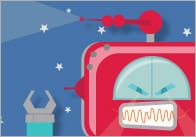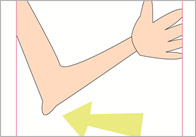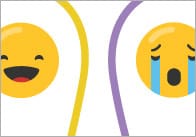When is pair not a pear?

Can you imagine the confusion children must experience as they get to grips with mathematical language. A flat shape does not resemble experiences of walking past high-rise flats, a ‘take-away’ in class is no where near as exciting as the ‘take-away’ from the chippy. I recently experienced similar confusion teaching low attaining Year 2 children who struggled with explaining the term ‘pair’. One child thought it was fruit and another clearly associated the term with the number 2. One gave an example ‘a pair of persons’.
A Pear Hunt
They were invited to go on a Pair Hunt (pardon the pun on Bear Hunt) and visited different tables to identify matching pairs. Some of the sets of objects did not have exact matches. These included knitted Christmas stockings, angel fish from a mobile, plastic toys of cartoon characters. Matching pairs included slippers, knives, forks and spoons, dinosaurs, Ikea soft toys and cartoon socks.
This gave children the chance to make decisions, accept or reject stimulus and swap things with others. They were using reasoning and enjoyed a degree of success collecting their different pairs.
Role-Play
Children then enjoyed a role play session, pretending to buy pairs of slippers. This was where things began to get interesting.
“How many pairs can you see?”
“How many slippers are there altogether?”
“How many children are wearing slippers?”
The majority of children in this group were unable to answer simple questions. Even when an additional question was added
“How many colours can you see?”
children struggled to answer the question.
The introduction of the term ‘pair’ had created a disturbance of the mind. They were struggling to come to terms with the fact that two things could be described as a group. They could count how many pairs but found it impossible to then say how many slippers altogether. The two concepts were clashing with one another.
Useful Tips
So how can we ensure that young children experience working with pairs of objects and learn the associated language through play.
Equip your setting with pairs of interesting pairs of objects. Pairs of gloves, socks, wellingtons, slippers, glasses, sunglasses, ear rings, trousers and pyjamas.
Provide situations for children to engage with pairs of objects either through topics, stories, rhymes or songs. Include them in free sorting activities and model the language. If you are a parent, look at your washing basket and sort socks with your child. As you play, model reasoning involved in working with pairs.
Each child will need a pair of socks so we need to make sure 10 socks match so we can make up 5 pairs. Mix up socks in a drawer, show exasperation complaining that ‘Pair Monster’ has been visiting again. Add an ‘odd’ sock that doesn’t match others. Ask your child what we might do with this odd sock. You may be surprised by their response. “Hang on to it. You might find the matching sock.” “Throw it away.” “I can wear it with this sock.” (Completely different design – quite in fashion according to my son.)
By setting up and sharing simple sorting routines, you can help children develop their understanding of one-to-one correspondence, grouping and counting at the same time. The Early Learning Goal for number includes doubling and halving. What better way can you introduce this concept?
Happy hunting!
Barbara Carr
Primary Mathematics Consultant
Director of Barbara Carr Consulting Ltd.
Comments
Leave a Reply
Popular Teaching Resources
Stay Up To Date
Sign up for our newsletter and we’ll let you know when we create new early years resources.







If my teachers had made maths more interesting like this then maybe something would’ve gone in!